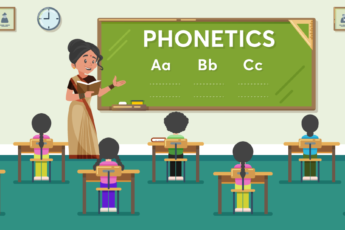What You Should Know About Neural Education
Neuroscience is the scientific study of the nervous system, including the brain, the senses and related behaviors. Neural Education is a unique self-directed learning method that works with your brain to develop a deeper understanding of how it processes information. It emphasizes a positive mood and promotes long-term learning to ensure learners retain all new knowledge for life.
Neural education uses neuroscience to help people learn better and think more clearly through learning strategies that take advantage of what we know about how our brains work.
Understanding Your Brain to Help You Learn Better
The brain is made up of neurons, cells that transmit information throughout our bodies through electrical signals. When neurons fire together in a certain sequence, we form memories and learn new skills. The more connections you make between neurons, the stronger those connections become. This is why repetition is so important in learning — if you’re trying to learn something new, try repeating it over and over again until you get it right. This way, more connections are made between neurons each time you repeat something, making it easier for you to remember in the future.
The more senses that are involved in learning something new, the better the chance that information will be remembered later. For example, reading about something isn’t as effective as hearing or seeing someone demonstrate what they’re talking about; likewise, hearing something isn’t as effective as seeing or doing it yourself.
Learning Strategies That Are More Compatible With Your Brain
✍️ Repetitive Activation of Neurons
One way to stimulate our brain is through repetition. Familiar sights, sounds, and situations produce a wave of activity across the brain’s cortex. This repeated activation reinforces the neural pathway and makes it easier for us to process future information associated with these experiences.
When we’re trying to memorize something like a math problem or a poem, repeating it several times will help build synaptic trails between the neurons involved in learning this material. The repetition of these connections between neurons will leave the child with a more efficient way to process information.
✍️ Spaced Practice
Research has shown that spaced learning is a technique that involves different spaced-out study sessions for learning material across time. Essentially, this is a way of spacing out your studying over one to two weeks. Spaced learning has been shown to improve long-term retention.
When you study the same material in one sitting, you activate neurons associated with that information in your brain. This repeated activation can lead to a reduced ability to recall the information later on in time. However, by taking breaks between study sessions, you allow yourself to take advantage of what’s known as “interference theory.”
Interference theory states that new memories compete with old ones and will eventually replace them unless they are continually reinforced by additional study or practice sessions. If you go too long without studying something, it becomes easier for new information to replace it in your mind because you haven’t reinforced those old memories enough times yet. Students must try breaking up their study schedule into smaller chunks throughout the week or month to take advantage of interference theory while implementing spaced learning techniques.
Here’s how neural education can make learning more effective:
👉 Understand Childhood Development
The first few years of life are the most critical development stage, and it is during this time that neural connections are formed. These connections form the basis for how we learn, behave, and interact with others throughout our lives. As a result, children who do not receive proper care in their early years can suffer developmental delays affecting their entire life later on. Neural Education can help teachers & educators understand how neural connections are formed during this critical stage to provide children with personalized education plans.
👉 Self-Monitoring
Learners are encouraged to evaluate their own performance on tasks to see how well they are doing and adjust their strategy accordingly. Learners discover what works best for them personally by engaging in this kind of self-monitoring. They also start getting feedback from their instructors about what strategies work well for them in specific subject areas or situations.
👉 Cognitive Tutoring
Neural Education uses cognitive tutoring, a specialized form of computer-based teaching that allows students to learn at their own pace. It also provides students with feedback based on their individual learning styles — something many teachers are not equipped to do effectively. The cognitive tutor adapts its lessons based on how well each student performs, so students can learn without getting frustrated or bored with repetitive exercises they already understand.
The Bottom Line
Teachers can use neural education as a supplementary teaching aid in classroom environments. Incorporating strategies and techniques inspired by the principles of neural education will allow teachers to make their lessons more experiential and interactive while addressing students’ diverse learning styles.
Square Panda India helps educators build their capacity for neural education by providing them with resources to inspire classroom practice and professional development opportunities that will equip them with the knowledge and skills required for improving student learning outcomes. To know more, visit ecce.squarepanda.in




Leave a Comment